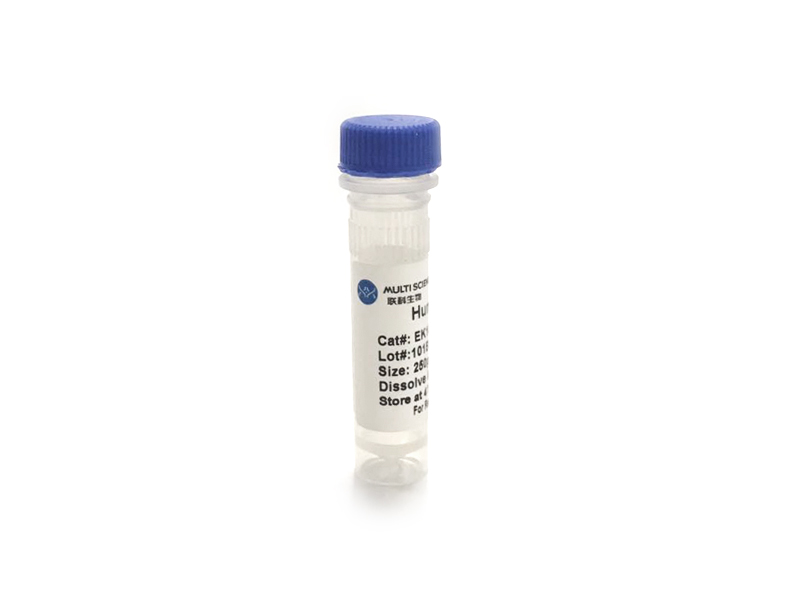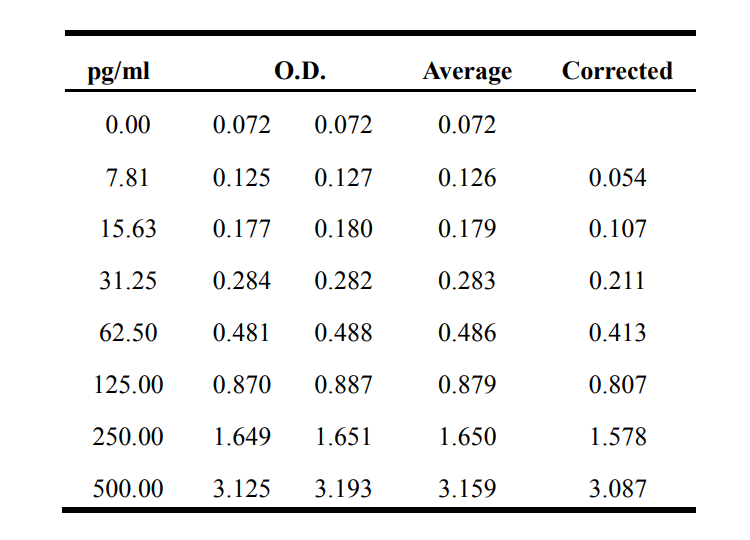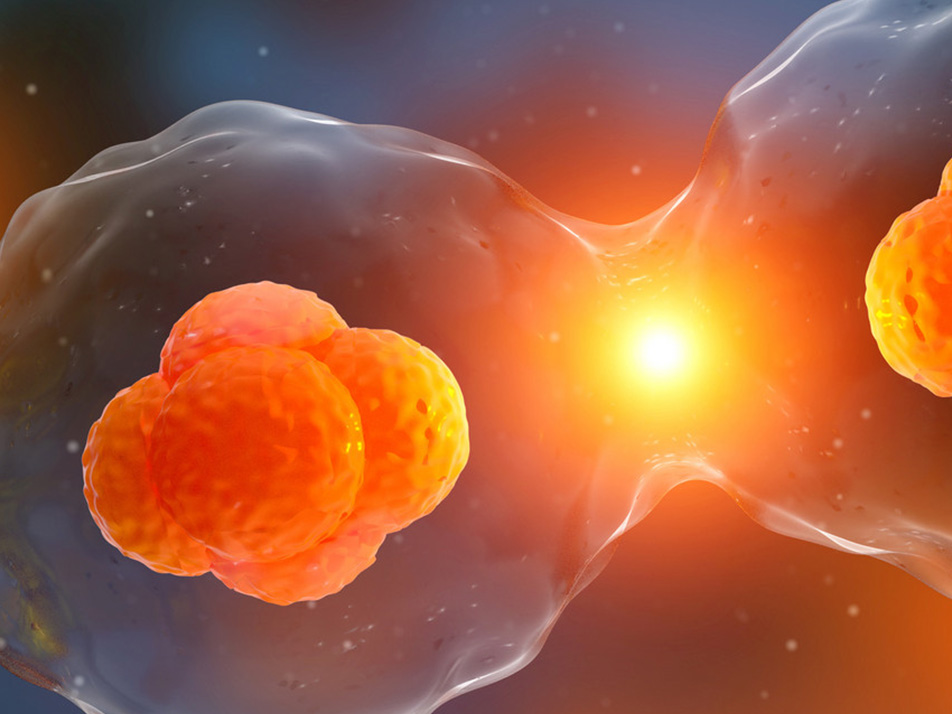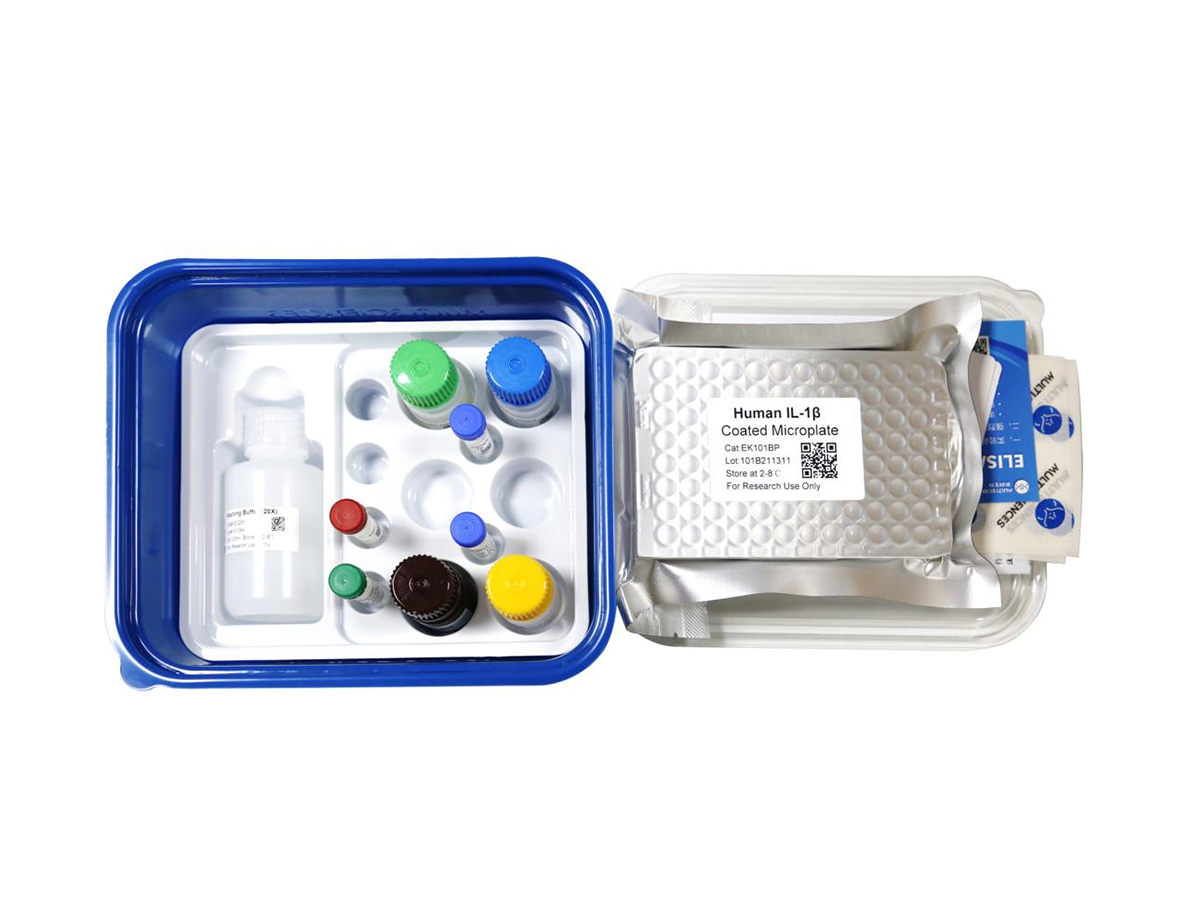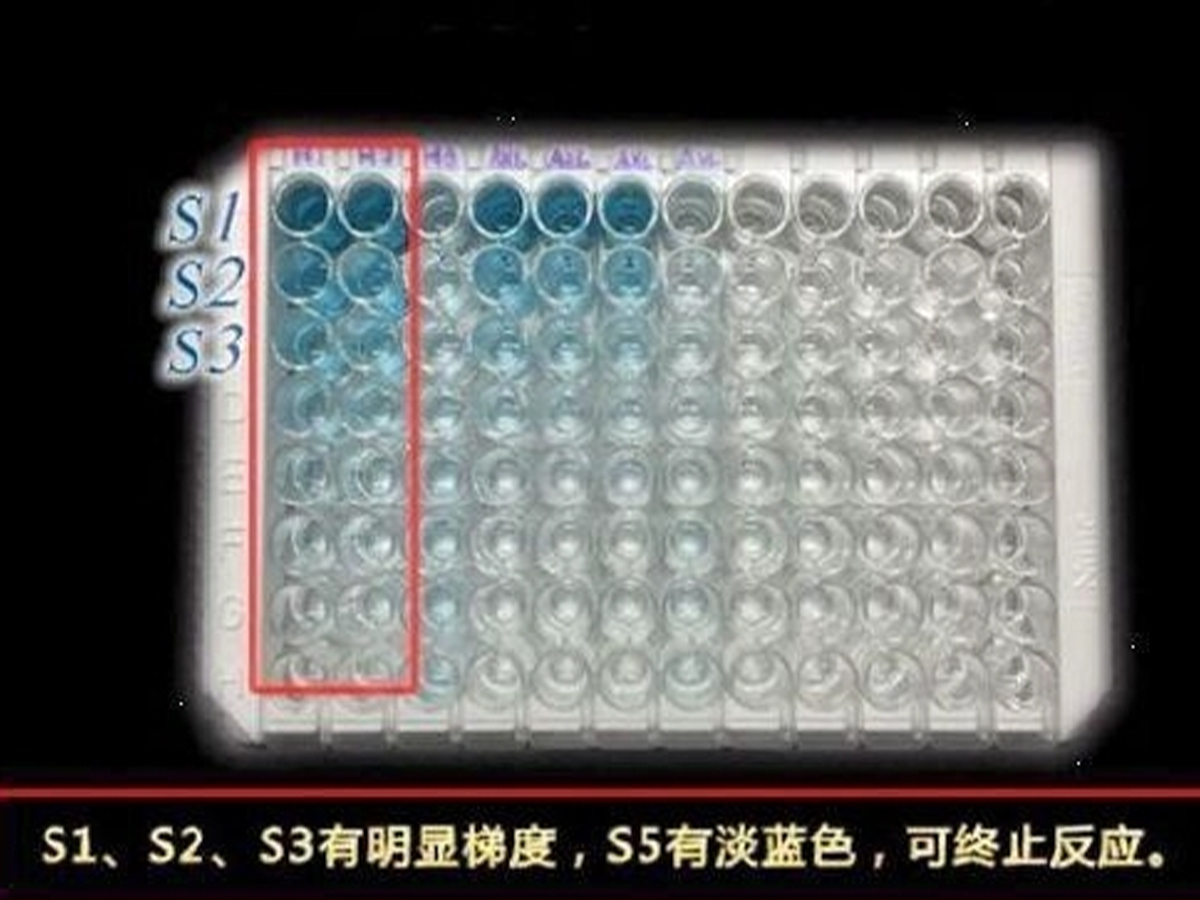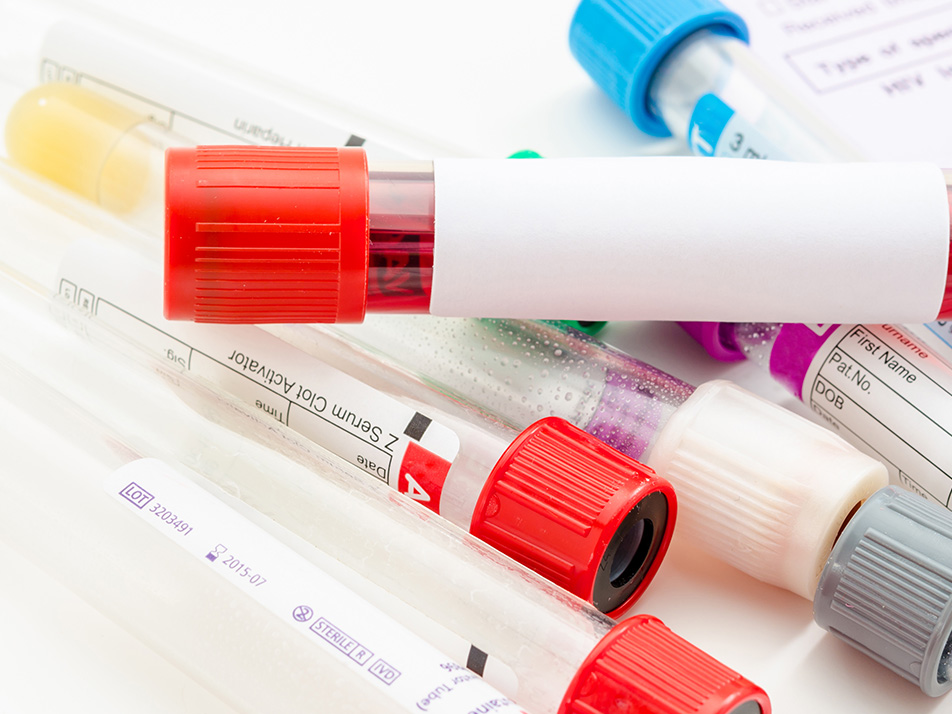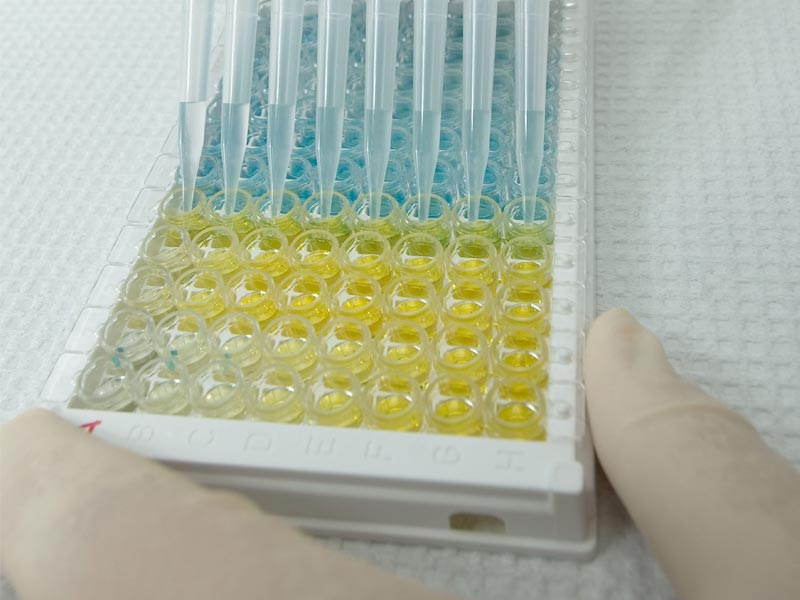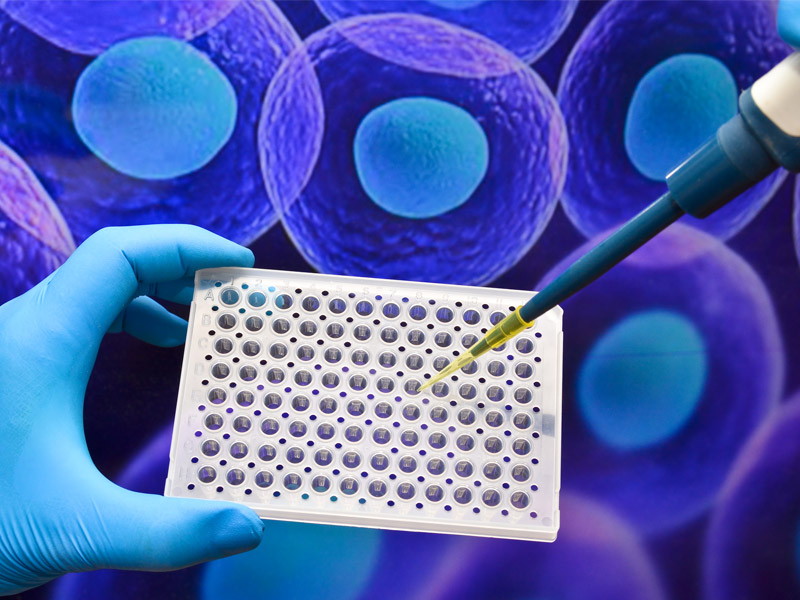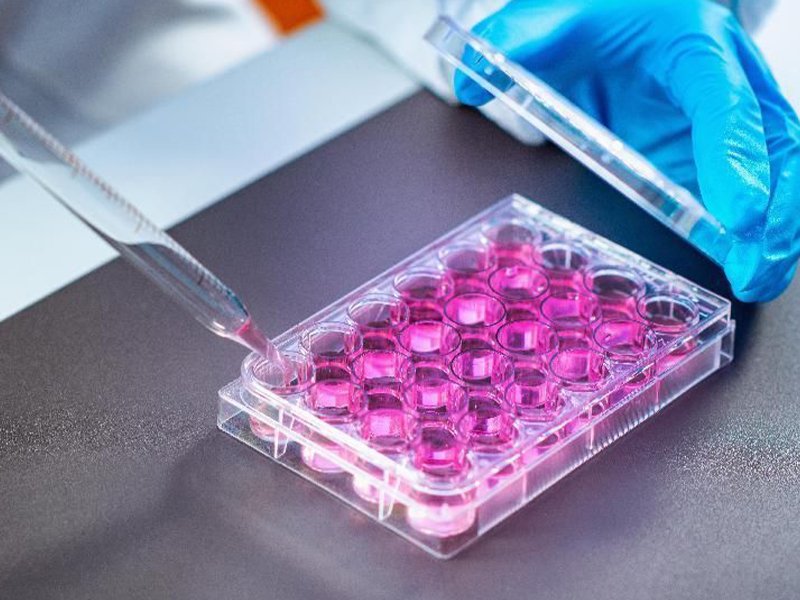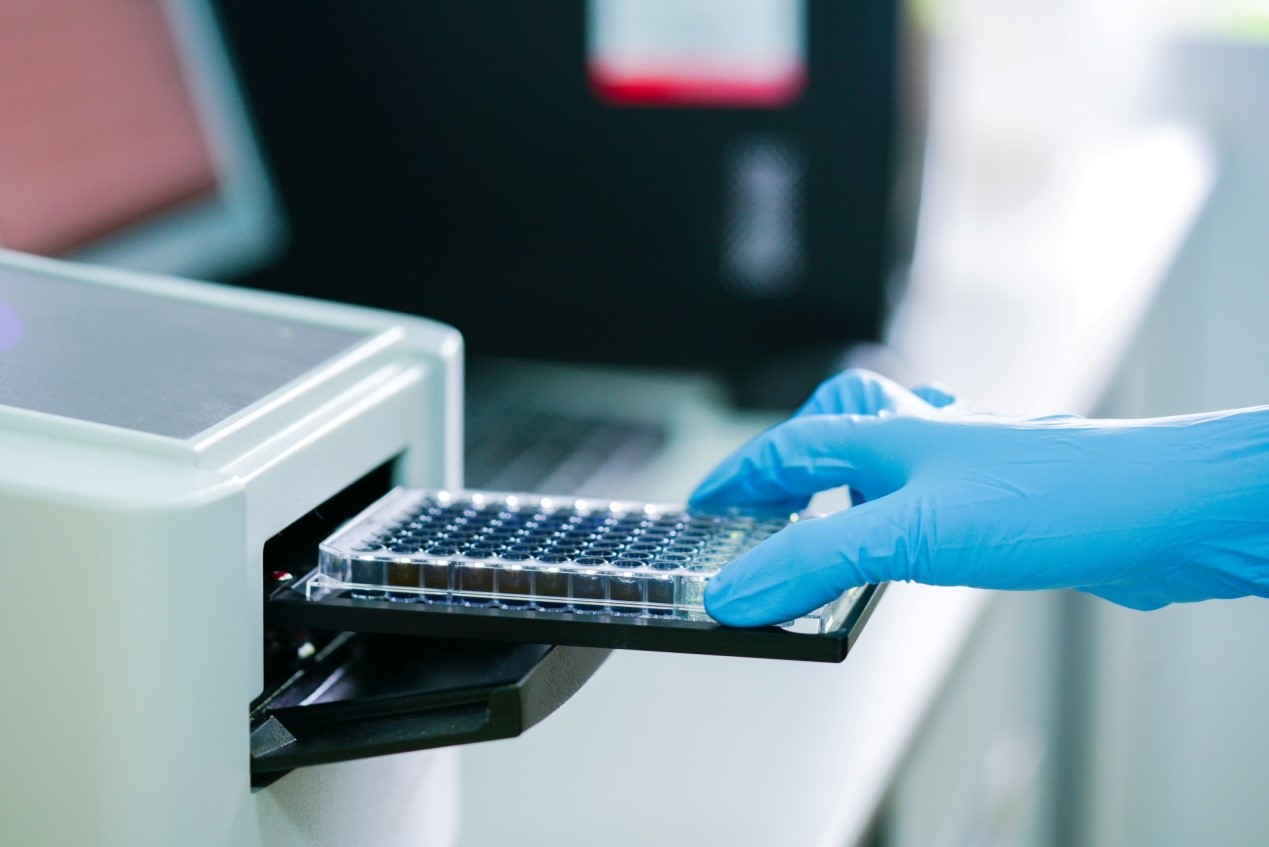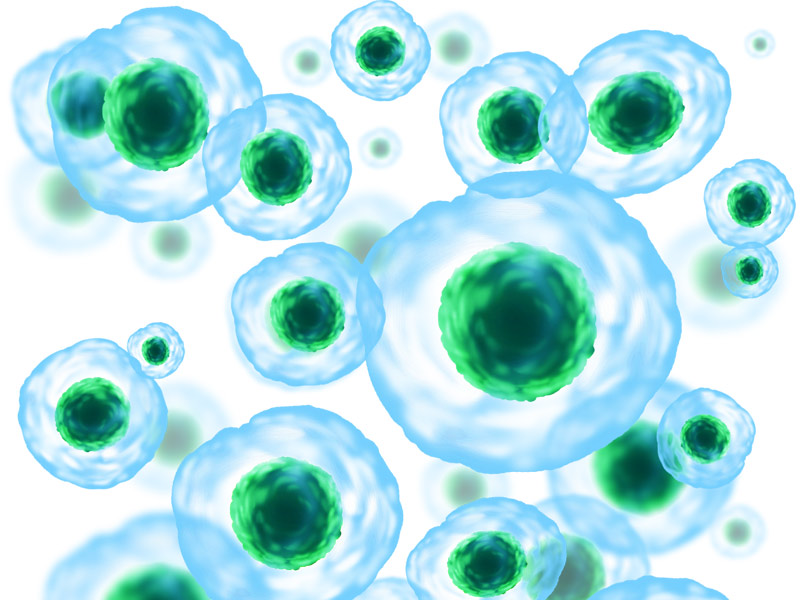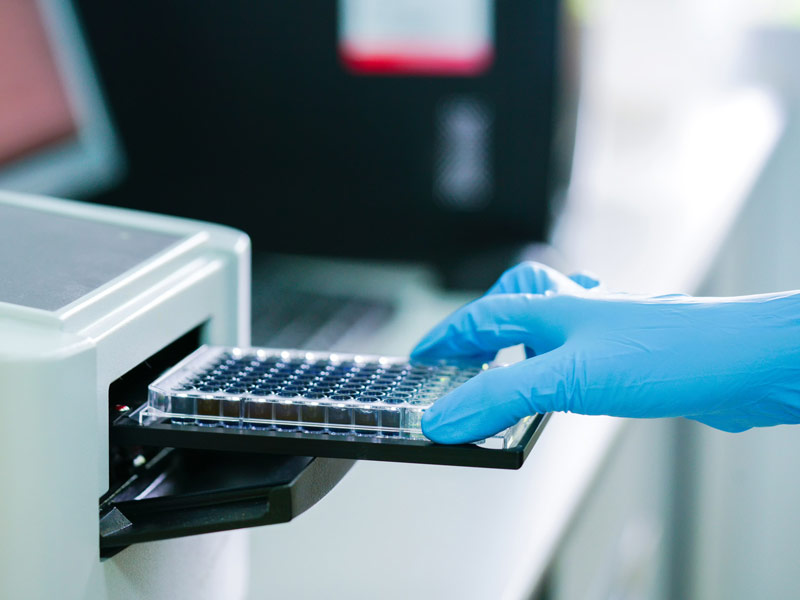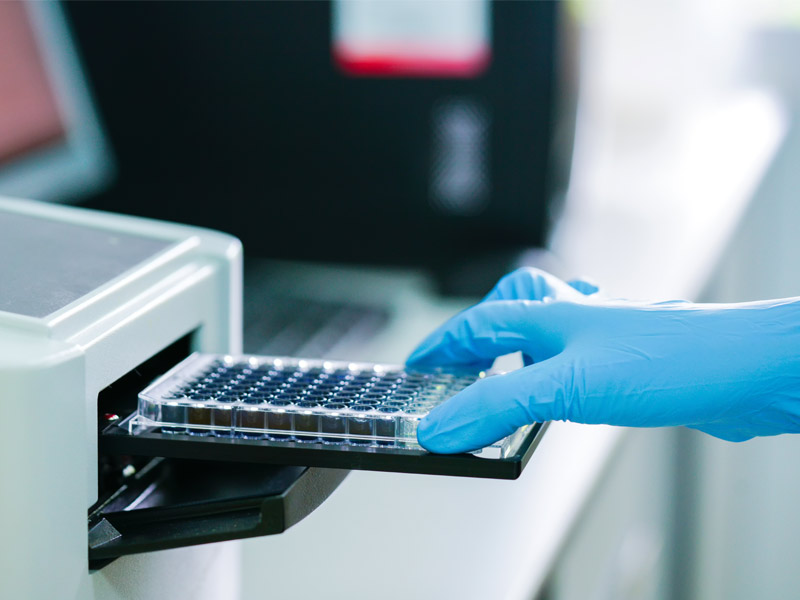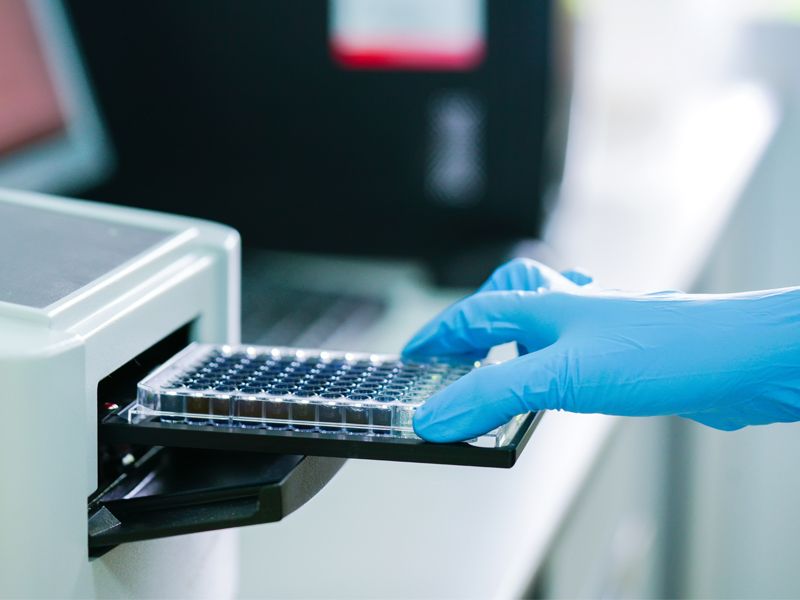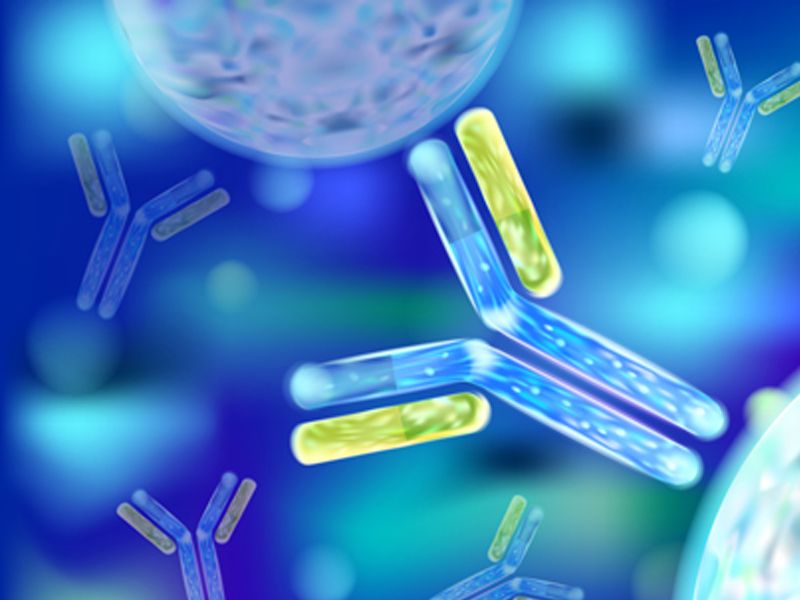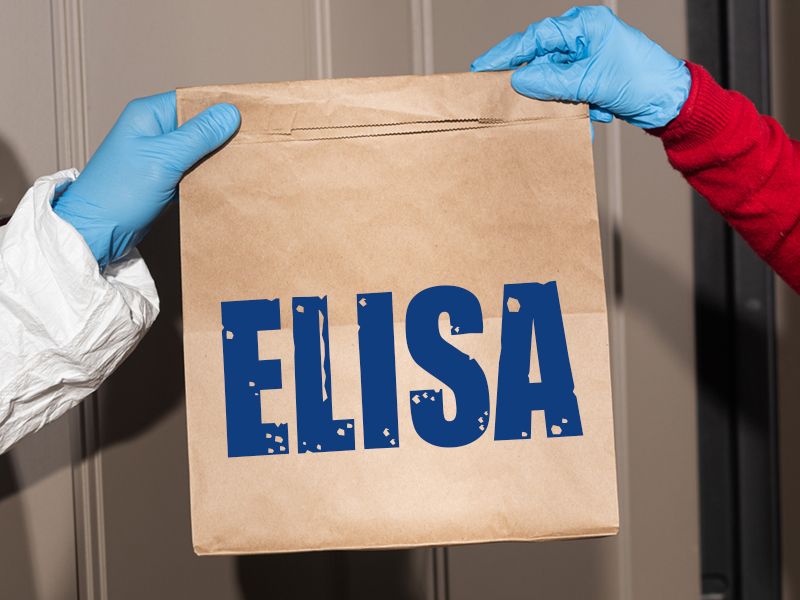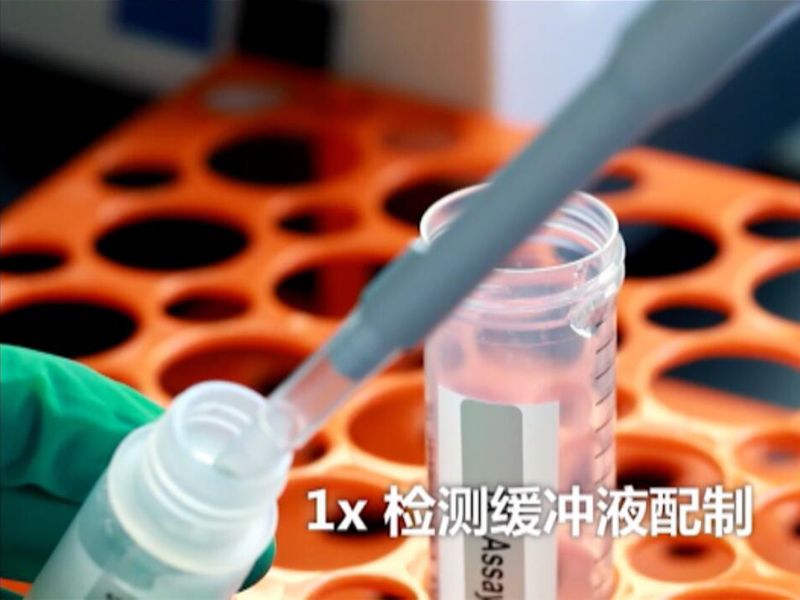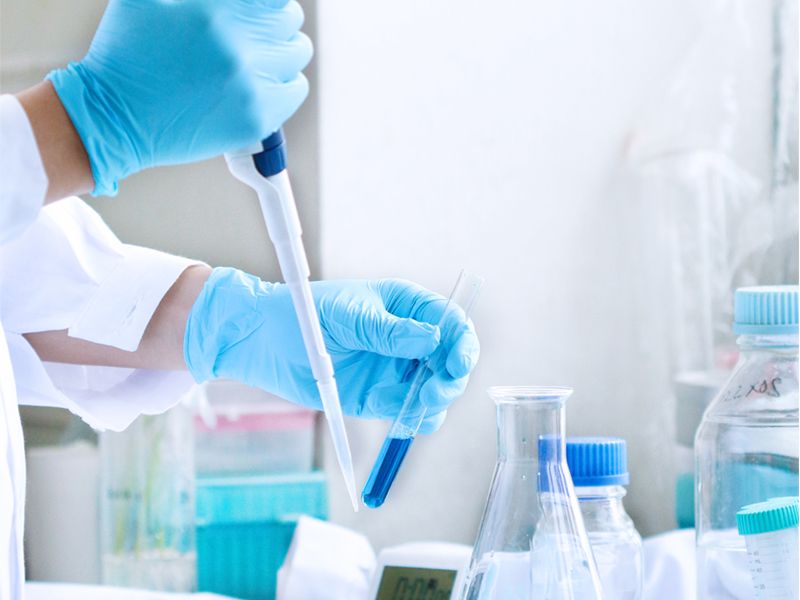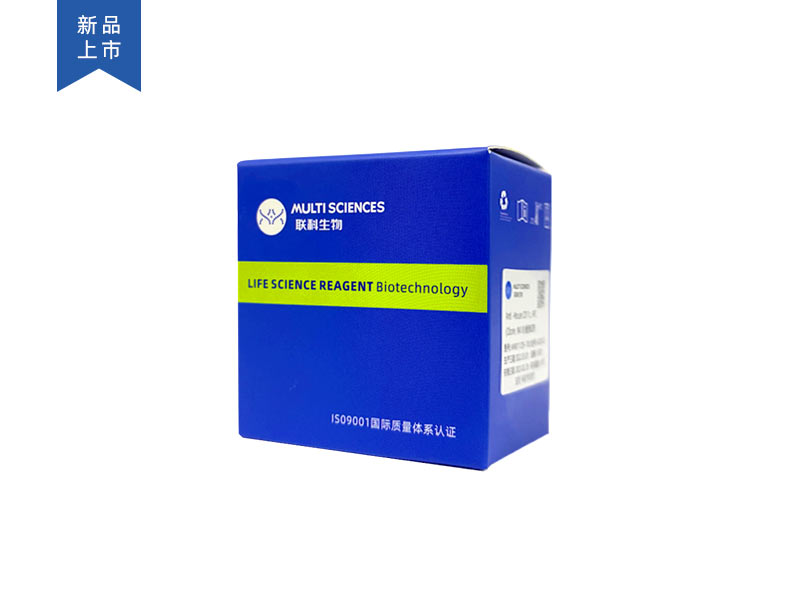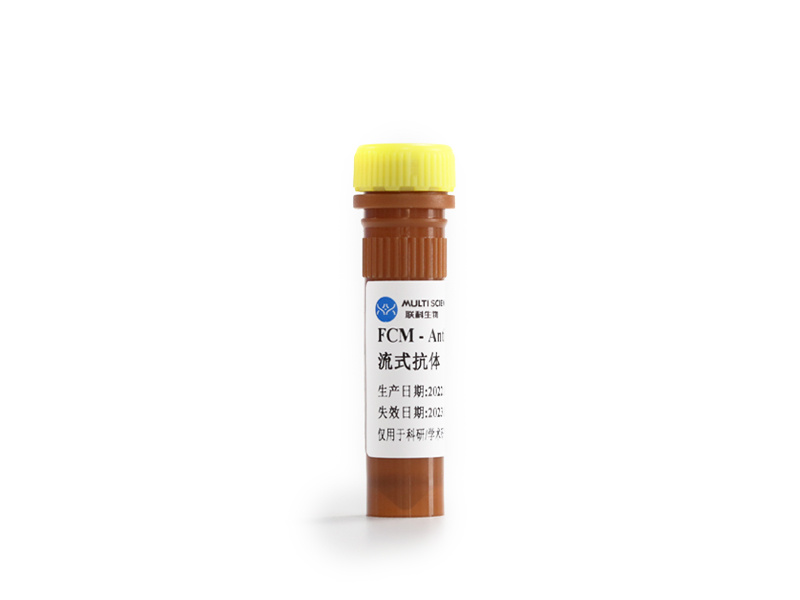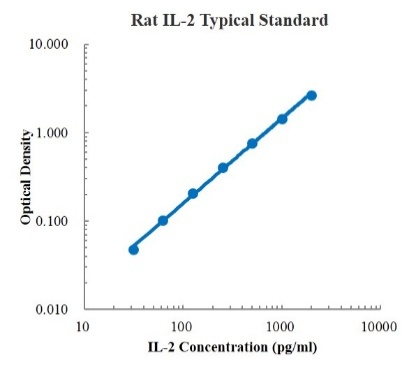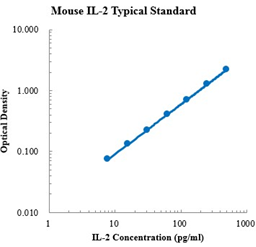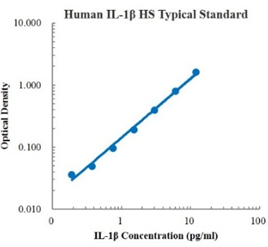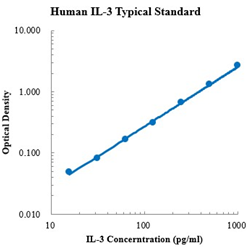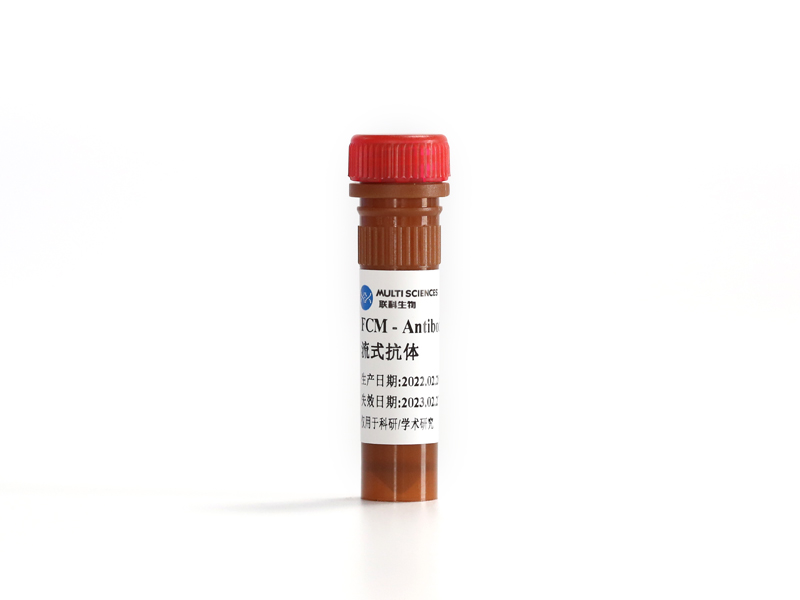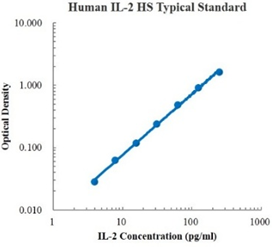Human IL-2 Standard (人白介素2 标准品)
¥580.00
描述
文章目录[隐藏]
本产品只包含标准品试剂,如需购买试剂盒请点击下图
-
- EK102 80 Citations
- FEATURED ELISA KIT, ELISA试剂盒
Human IL-2 ELISA Kit检测试剂盒(酶联免疫吸附法)
- ¥1,600.00 – ¥10,800.00
| 商品名 |
Human IL-2 Standard (人白介素2 标准品) |
|---|---|
| 组分 |
人白介素2标准品 |
| 检测方法 |
双抗夹心法 |
| 样本类型 |
血清,血浆,细胞培养上清及其他生物学样本 |
| 板式 |
管 |
| 保存 |
短期4℃,长期-20℃保存 |
| 运输条件 |
4℃蓝冰运输 |
检测原理:本试剂盒采用双抗体夹心酶联免疫吸附检测技术。特异性抗人IL-2抗体预包被在高亲和力的酶标板上。酶标板孔中加入标准品、待测样本和生物素化的检测抗体,经过孵育,样本中存在的IL-2与固相抗体和检测抗体结合。洗涤去除未结合的物质后,加入辣根过氧化物酶标记的链霉亲和素(Streptavidin-HRP)。洗涤后,加入显色底物TMB,避光显色。颜色反应的深浅与样本中IL-2的浓度成正比。加入终止液终止反应,在450 nm波长(参考波长570 - 630 nm)测定吸光度值。
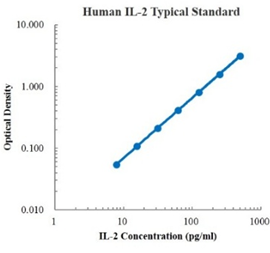
分子信息
IL2 分子靶点信息概述
- 分子名:IL2, interleukin 2
- 基因家族:Interleukins
- 别名:IL-2; TCGF
- 全称:T cell growth factor
IL2 分子靶点综述
白细胞介素2(IL-2)是15kDa的糖蛋白,在人类中,由位于4号染色体q26–28区域的单基因编码。它是免疫系统中的一类信号分子,调控对具有免疫功能的白血球(白细胞,通常是淋巴细胞)的活性。IL-2是机体对微生物感染的天然应答,区别外来和自身抗原。IL-2通过与IL-2受体来发挥功能,其受体由3条链组成,分别为α链(CD25)、β链(CD122)和γ链(CD132)。监测血清中的IL-2含量为多种病理状态提供更详细的视角,包括癌症、传染病、移植排斥、多发性硬化症、类风湿性关节炎、系统性红斑狼疮和I型糖尿病等。
人 Human IL2 分子靶点信息
- 分子名:IL2, interleukin 2
- 别称:
- aldesleukin
- IL-2
- interleukin-2
- involved in regulation of T-cell clonal expansion
- lymphokine
- T cell growth factor
- TCGF
- 基因序列:NCBI_Gene: 3558
- 蛋白序列:UniProtKB: P60568
人 Human IL2靶点分子功能(预测)
Enables cytokine activity and interleukin-2 receptor binding activity. Involved in leukocyte activation involved in immune response; positive regulation of interleukin-17 production; and positive regulation of tyrosine phosphorylation of STAT protein. Acts upstream of or within negative regulation of B cell apoptotic process; positive regulation of B cell proliferation; and positive regulation of activated T cell proliferation. Predicted to be located in extracellular space. Implicated in several diseases, including Takayasu's arteritis; auditory system disease (multiple); autoimmune disease (multiple); carcinoma (multiple); and neurodegenerative disease (multiple). Biomarker of several diseases, including Zellweger syndrome; aggressive periodontitis; anogenital venereal wart; autoimmune disease (multiple); and uveitis (multiple).
引用文献统计
该产品被引用的文献总数为:0
暂无相关文献引用。
ELISA标准品操作常见问题查看更多ELISA标准品操作步骤技术文章
查看更多ELISA标准品操作步骤技术文章
操作步骤
文章目录[隐藏]
- ELISA操作常见问题
- 小心!你的 ELISA 试剂盒可能是假的
- 开学学习计划,如何收集ELISA检测样本——细胞
- 开学学习计划,如何选择ELISA试剂盒
- 开学学习计划,ELISA从新手到入门!
- 一文掌握ELISA实验显色判断、数据分析及标曲拟合
- 血清OR血浆,哪个是ELISA的菜
- ELISA通关必备丨数据篇丨标准曲线不佳
- ELISA通关必备丨操作篇丨常见问题及解决方案
- ELISA通关必备丨操作篇丨溶解与稀释标准品
- ELISA通关必备丨样本篇丨不常见样本
- ELISA通关必备丨样本篇丨常见样本丨细胞
- ELISA通关必备丨如何选择试剂盒
- ELISA通关必备丨基础知识
- 真?假?ELISA试剂盒选择要小心
- ELISA常见类型一 | 双抗夹心法,你要的都在这里!
- ELISA常见类型二 | 竞争法,五分钟搞定!
- 叮!联科向您投递了个ELISA实验操作干货包,请查收~
- 【视频】ELISA实验操作步骤演示视频教程
- ELISA 组织样本的处理—大鼠组织
- 【视频】ELISA实验原理与常见问题分析
- 查看更多ELISA操作相关问题
ELISA操作常见问题
查看更多ELISA操作相关问题
引用文献
文章目录[隐藏]
- Inflammatory Cytokines Changed in Patients With Depression Before and After Repetitive Transcranial Magnetic Stimulation Treatment
- Vitamin D deficiency is associated with thyroid autoimmunity: results from an epidemiological survey in Tianjin, China
- Original research: Shed antigen-induced blocking effect on CAR-T cells targeting Glypican-3 in Hepatocellular Carcinoma
- Reducing Hinge Flexibility of CAR-T Cells Prolongs Survival In Vivo With Low Cytokines Release
- Adoptive immunotherapy using T lymphocytes redirected to glypican-3 for the treatment of lung squamous cell carcinoma
- Development of bispecific anti-c-Met/PD-1 diabodies for the treatment of solid tumors and the effect of c-Met binding affinity on efficacy
- Preclinical characterization of a Fab-like CD3/CLDN18.2 XFab® bispecific antibody against solid tumors
- Cytokine-induced killer cells efficiently kill stem-like cancer cells of nasopharyngeal carcinoma via the NKG2D-ligands recognition
- JAK-STAT Domain Enhanced MUC1-CAR-T Cells Induced Esophageal Cancer Elimination
- Chimeric cytokine receptor enhancing PSMA-CAR-T cell-mediated prostate cancer regression
- Treatment of hepatocellular carcinoma with a GPC3-targeted bispecific T cell engager
- Development of GPC3 and EGFR-dual-targeting chimeric antigen receptor-T cells for adoptive T cell therapy
- Selective Targeting of Glioblastoma with EGFRvIII/EGFR Bitargeted Chimeric Antigen Receptor T Cell
- Claudin18.2-Specific Chimeric Antigen Receptor Engineered T Cells for the Treatment of Gastric Cancer
- Treatment Efficacy of Chuang Ling Ye, a Traditional Chinese Herbal Medicine Compound, on Idiopathic Granulomatous Mastitis: A Randomized Controlled Trial
- Engineered IL-7 Receptor Enhances the Therapeutic Effect of AXL-CAR-T Cells on Triple-Negative Breast Cancer
- Nanobody-based CAR T cells targeting intracellular tumor antigens
- A PD-1 peptide antagonist exhibits potent anti-tumor and immune regulatory activity
- Design and Synthesis of A PD-1 Binding Peptide and Evaluation of Its Anti-Tumor Activity
- Development of T Cells Redirected to Glypican-3 for the Treatment of Hepatocellular Carcinoma
- Disruption of PD-1 Enhanced the Anti-tumor Activity of Chimeric Antigen Receptor T Cells Against Hepatocellular Carcinoma
- Changes in peripheral blood cytokines in patients with severe fever with thrombocytopenia syndrome
- Different effects of lipoteichoic acid from C. butyricum and S. aureus on inflammatory responses of HT-29 cells
- The clinical study on treatment of CD19-directed chimeric antigen receptor-modified T cells in a case of refractory Richter syndrome
- Protective Effect of Hedyotis diffusa Willd. Ethanol Extract on Isoniazid-Induced Liver Injury in the Zebrafish Model
- Regulation of CBL and ESR1 expression by microRNA-22‑3p, 513a-5p and 625-5p may impact the pathogenesis of dust mite-induced pediatric asthma
- Hyperbaric Oxygen Alleviates the Inflammatory Response Induced by LPS Through Inhibition of NF-κB/MAPKs-CCL2/CXCL1 Signaling Pathway in Cultured Astrocytes
- Increased antitumor activities of glypican-3-specific chimeric antigen receptor-modified T cells by coexpression of a soluble PD1–CH3 fusion protein
- Significantly increased anti-tumor activity of carcinoembryonic antigen-specific chimeric antigen receptor T cells in combination with recombinant human IL-12
- Antigen presentation of the Oct4 and Sox2 peptides by CD154-activated B lymphocytes enhances the killing effect of cytotoxic T lymphocytes on tumor stem-like cells derived from cisplatin-resistant lung cancer cells
- Accurate control of dual-receptor-engineered T cell activity through a bifunctional anti-angiogenic peptide
- Armored Inducible Expression of IL-12 Enhances Antitumor Activity of Glypican-3–Targeted Chimeric Antigen Receptor–Engineered T Cells in Hepatocellular Carcinoma
- Effect of laser therapy on expression of angio- and fibrogenic factors, and cytokine concentrations during the healing process of human pressure ulcers
- Expression of coinhibitory PD-L1 on CD4+CD25+FOXP3+ regulatory T cells is elevated in patients with acute coronary syndrome
- Recognition and killing of cancer stem-like cell population in hepatocellular carcinoma cells by cytokine-induced killer cells via NKG2d-ligands recognition
- Efficacy and safety of low-dose interleukin-2 in combination with methotrexate in patients with active rheumatoid arthritis: a randomized, double-blind, placebo-controlled phase 2 trial
- Infant immune response to hepatitis B vaccine after fetal exposure to telbivudine
- IFN-γ and TNF-α aggravate endothelial damage caused by CD123-targeted CAR T cell
- Anemoside A3 activates TLR4-dependent M1-phenotype macrophage polarization to represses breast tumor growth and angiogenesis
- Upregulation of MicroRNA 711 Mediates HIV-1 Vpr Promotion of Kaposi's Sarcoma-Associated Herpesvirus Latency and Induction of Pro-proliferation and Pro-survival Cytokines by Targeting the Notch/NF-κB-Signaling Axis
- A novel membrane-bound interleukin-2 promotes NK-92 cell persistence and anti-tumor activity
- Development of T cells carrying two complementary chimeric antigen receptors against glypican-3 and asialoglycoprotein receptor 1 for the treatment of hepatocellular carcinoma
- EGLIF-CAR-T Cells Secreting PD-1 Blocking Antibodies Significantly Mediate the Elimination of Gastric Cancer
- Secretion of human soluble programmed cell death protein 1 by chimeric antigen receptor-modified T cells enhances anti-tumor efficacy
- Enhanced Safety and Antitumor Efficacy of Switchable Dual Chimeric Antigen Receptor-Engineered T Cells against Solid Tumors through a Synthetic Bifunctional PD-L1-Blocking Peptide
- Ultrasound-Guided Percutaneous Transhepatic Gallbladder Drainage Improves the Prognosis of Patients with Severe Acute Cholecystitis
- A metagenome-wide association study of the gut microbiota in recurrent aphthous ulcer and regulation by thalidomide.
- Engineered triple inhibitory receptor resistance improves anti-tumor CAR-T cell performance via CD56
- Engineering of α-PD-1 antibody-expressing long-lived plasma cells by CRISPR/Cas9-mediated targeted gene integration
- 32A9, a novel human antibody for designing an immunotoxin and CAR-T cells against glypican-3 in hepatocellular carcinoma
- SHTXTHHly, an extracellular secretion platform for the preparation of bioactive peptides and proteins in Escherichia coli
- Pyk2/MCU Pathway as a New Target for Reversing Atherosclerosis
- Analysis of translation control tumor protein related to deltamethrin stress in Drosophila kc cells
- TGF-β1-Mediated PD-L1 Glycosylation Contributes to Immune Escape via c-Jun/STT3A Pathway in Nasopharyngeal Carcinoma
- An electrochemical biosensor for the assessment of tumor immunotherapy based on the detection of immune checkpoint protein programmed death ligand-1
- Study on the Mechanism of Improving HIV/AIDS Immune Function with Jian Aikang Concentrated Pill Based on Network Pharmacology Combined with Experimental Validation
- An intronic polymorphism of NFATC1 gene shows a risk association with biopsy-proven acute rejection in renal transplant recipients
- Distinct roles of programmed death ligand 1 alternative splicing isoforms in colorectal cancer
- Metabolic Reprogramming of CD4+ T Cells by Mesenchymal Stem Cell-Derived Extracellular Vesicles Attenuates Autoimmune Hepatitis Through Mitochondrial Protein Transfer
- A nanobody-guided multifunctional T cell engager promotes strong anti-tumor responses via synergistic immuno-photothermal effects
- Blocking the PD-1 signal transduction by occupying the phosphorylated ITSM recognition site of SHP-2
- Immunomodulatory effect of PLGA-encapsulated mesenchymal stem cells-derived exosomes for the treatment of allergic rhinitis
- IMT030122, A novel engineered EpCAM/CD3/4-1BB tri-specific antibody, enhances T-cell recruitment and demonstrates anti-tumor activity in mouse models of colorectal cancer
- Self-reinforcing nano-spearhead drives the efficacy of CAR-T cells against progressive triple negative breast cancer
- Lyophilized lymph nodes for improved delivery of chimeric antigen receptor T cells
- IGFBP3 induces PD-L1 expression to promote glioblastoma immune evasion
- Prognostic biomarker DARS2 correlated with immune infiltrates in bladder tumor
- Mitochondrial isocitrate dehydrogenase impedes CAR T?cell function by restraining antioxidant metabolism and histone acetylation
- A programmable protease-based protein secretion platform for therapeutic applications
- Targeting and cytotoxicity of chimeric antigen receptor T cells grafted with PD1 extramembrane domain
- A dendritic/tumor fusion cell vaccine enhances efficacy of nanobody-based CAR-T cells against solid tumor
- A role of NR4A2 in Graves’ disease: regulation of Th17/Treg
- DCTPP1, a Reliable Q-Biomarker for Comprehensive Evaluation of the Quality of Tripterygium Glycoside Tablets Based on Chemical References
- CD24 is a novel target of chimeric antigen receptor T cells for the treatment of triple negative breast cancer
- Universal chimeric Fcγ receptor T cells with appropriate affinity for IgG1 antibody exhibit optimal antitumor efficacy
- Azithromycin attenuates wheezing after pulmonary inflammation through inhibiting histone H3K27me3 hypermethylation mediated by EZH2
- A metagenome-wide association study of the gut microbiota in recurrent aphthous ulcer and regulation by thalidomide
- Distinct roles of programmed death ligand 1 alternative splicing isoforms in colorectal cancer
- Increased Antitumor Activities of Glypican-3-Specific Chimeric Antigen Receptor-Modified T Cells by Coexpression of a Soluble Pd1-Ch3 Fusion Protein
- Recombination of a Dual-Car-Modified T Lymphocyte to Accurately Eliminate Pancreatic Malignancy
Inflammatory Cytokines Changed in Patients With Depression Before and After Repetitive Transcranial Magnetic Stimulation Treatment
Vitamin D deficiency is associated with thyroid autoimmunity: results from an epidemiological survey in Tianjin, China
Original research: Shed antigen-induced blocking effect on CAR-T cells targeting Glypican-3 in Hepatocellular Carcinoma
Reducing Hinge Flexibility of CAR-T Cells Prolongs Survival In Vivo With Low Cytokines Release
Adoptive immunotherapy using T lymphocytes redirected to glypican-3 for the treatment of lung squamous cell carcinoma
Development of bispecific anti-c-Met/PD-1 diabodies for the treatment of solid tumors and the effect of c-Met binding affinity on efficacy
Preclinical characterization of a Fab-like CD3/CLDN18.2 XFab® bispecific antibody against solid tumors
Cytokine-induced killer cells efficiently kill stem-like cancer cells of nasopharyngeal carcinoma via the NKG2D-ligands recognition
JAK-STAT Domain Enhanced MUC1-CAR-T Cells Induced Esophageal Cancer Elimination
Chimeric cytokine receptor enhancing PSMA-CAR-T cell-mediated prostate cancer regression
Treatment of hepatocellular carcinoma with a GPC3-targeted bispecific T cell engager
Development of GPC3 and EGFR-dual-targeting chimeric antigen receptor-T cells for adoptive T cell therapy
Selective Targeting of Glioblastoma with EGFRvIII/EGFR Bitargeted Chimeric Antigen Receptor T Cell
Claudin18.2-Specific Chimeric Antigen Receptor Engineered T Cells for the Treatment of Gastric Cancer
Treatment Efficacy of Chuang Ling Ye, a Traditional Chinese Herbal Medicine Compound, on Idiopathic Granulomatous Mastitis: A Randomized Controlled Trial
Engineered IL-7 Receptor Enhances the Therapeutic Effect of AXL-CAR-T Cells on Triple-Negative Breast Cancer
Nanobody-based CAR T cells targeting intracellular tumor antigens
A PD-1 peptide antagonist exhibits potent anti-tumor and immune regulatory activity
Design and Synthesis of A PD-1 Binding Peptide and Evaluation of Its Anti-Tumor Activity
Development of T Cells Redirected to Glypican-3 for the Treatment of Hepatocellular Carcinoma
Disruption of PD-1 Enhanced the Anti-tumor Activity of Chimeric Antigen Receptor T Cells Against Hepatocellular Carcinoma
Changes in peripheral blood cytokines in patients with severe fever with thrombocytopenia syndrome
Different effects of lipoteichoic acid from C. butyricum and S. aureus on inflammatory responses of HT-29 cells
The clinical study on treatment of CD19-directed chimeric antigen receptor-modified T cells in a case of refractory Richter syndrome
Protective Effect of Hedyotis diffusa Willd. Ethanol Extract on Isoniazid-Induced Liver Injury in the Zebrafish Model
Regulation of CBL and ESR1 expression by microRNA-22‑3p, 513a-5p and 625-5p may impact the pathogenesis of dust mite-induced pediatric asthma
Hyperbaric Oxygen Alleviates the Inflammatory Response Induced by LPS Through Inhibition of NF-κB/MAPKs-CCL2/CXCL1 Signaling Pathway in Cultured Astrocytes
Increased antitumor activities of glypican-3-specific chimeric antigen receptor-modified T cells by coexpression of a soluble PD1–CH3 fusion protein
Significantly increased anti-tumor activity of carcinoembryonic antigen-specific chimeric antigen receptor T cells in combination with recombinant human IL-12
Antigen presentation of the Oct4 and Sox2 peptides by CD154-activated B lymphocytes enhances the killing effect of cytotoxic T lymphocytes on tumor stem-like cells derived from cisplatin-resistant lung cancer cells
Accurate control of dual-receptor-engineered T cell activity through a bifunctional anti-angiogenic peptide
Armored Inducible Expression of IL-12 Enhances Antitumor Activity of Glypican-3–Targeted Chimeric Antigen Receptor–Engineered T Cells in Hepatocellular Carcinoma
Effect of laser therapy on expression of angio- and fibrogenic factors, and cytokine concentrations during the healing process of human pressure ulcers
Expression of coinhibitory PD-L1 on CD4+CD25+FOXP3+ regulatory T cells is elevated in patients with acute coronary syndrome
Recognition and killing of cancer stem-like cell population in hepatocellular carcinoma cells by cytokine-induced killer cells via NKG2d-ligands recognition
Efficacy and safety of low-dose interleukin-2 in combination with methotrexate in patients with active rheumatoid arthritis: a randomized, double-blind, placebo-controlled phase 2 trial
Infant immune response to hepatitis B vaccine after fetal exposure to telbivudine
IFN-γ and TNF-α aggravate endothelial damage caused by CD123-targeted CAR T cell
Anemoside A3 activates TLR4-dependent M1-phenotype macrophage polarization to represses breast tumor growth and angiogenesis
Upregulation of MicroRNA 711 Mediates HIV-1 Vpr Promotion of Kaposi's Sarcoma-Associated Herpesvirus Latency and Induction of Pro-proliferation and Pro-survival Cytokines by Targeting the Notch/NF-κB-Signaling Axis
A novel membrane-bound interleukin-2 promotes NK-92 cell persistence and anti-tumor activity
Development of T cells carrying two complementary chimeric antigen receptors against glypican-3 and asialoglycoprotein receptor 1 for the treatment of hepatocellular carcinoma
EGLIF-CAR-T Cells Secreting PD-1 Blocking Antibodies Significantly Mediate the Elimination of Gastric Cancer
Secretion of human soluble programmed cell death protein 1 by chimeric antigen receptor-modified T cells enhances anti-tumor efficacy
Enhanced Safety and Antitumor Efficacy of Switchable Dual Chimeric Antigen Receptor-Engineered T Cells against Solid Tumors through a Synthetic Bifunctional PD-L1-Blocking Peptide
Ultrasound-Guided Percutaneous Transhepatic Gallbladder Drainage Improves the Prognosis of Patients with Severe Acute Cholecystitis
A metagenome-wide association study of the gut microbiota in recurrent aphthous ulcer and regulation by thalidomide.
Engineered triple inhibitory receptor resistance improves anti-tumor CAR-T cell performance via CD56
Engineering of α-PD-1 antibody-expressing long-lived plasma cells by CRISPR/Cas9-mediated targeted gene integration
32A9, a novel human antibody for designing an immunotoxin and CAR-T cells against glypican-3 in hepatocellular carcinoma
SHTXTHHly, an extracellular secretion platform for the preparation of bioactive peptides and proteins in Escherichia coli
Pyk2/MCU Pathway as a New Target for Reversing Atherosclerosis
Analysis of translation control tumor protein related to deltamethrin stress in Drosophila kc cells
TGF-β1-Mediated PD-L1 Glycosylation Contributes to Immune Escape via c-Jun/STT3A Pathway in Nasopharyngeal Carcinoma
An electrochemical biosensor for the assessment of tumor immunotherapy based on the detection of immune checkpoint protein programmed death ligand-1
Study on the Mechanism of Improving HIV/AIDS Immune Function with Jian Aikang Concentrated Pill Based on Network Pharmacology Combined with Experimental Validation
An intronic polymorphism of NFATC1 gene shows a risk association with biopsy-proven acute rejection in renal transplant recipients
Distinct roles of programmed death ligand 1 alternative splicing isoforms in colorectal cancer
Metabolic Reprogramming of CD4+ T Cells by Mesenchymal Stem Cell-Derived Extracellular Vesicles Attenuates Autoimmune Hepatitis Through Mitochondrial Protein Transfer
A nanobody-guided multifunctional T cell engager promotes strong anti-tumor responses via synergistic immuno-photothermal effects
Blocking the PD-1 signal transduction by occupying the phosphorylated ITSM recognition site of SHP-2
Immunomodulatory effect of PLGA-encapsulated mesenchymal stem cells-derived exosomes for the treatment of allergic rhinitis
IMT030122, A novel engineered EpCAM/CD3/4-1BB tri-specific antibody, enhances T-cell recruitment and demonstrates anti-tumor activity in mouse models of colorectal cancer
Self-reinforcing nano-spearhead drives the efficacy of CAR-T cells against progressive triple negative breast cancer
Lyophilized lymph nodes for improved delivery of chimeric antigen receptor T cells
IGFBP3 induces PD-L1 expression to promote glioblastoma immune evasion
Prognostic biomarker DARS2 correlated with immune infiltrates in bladder tumor
Mitochondrial isocitrate dehydrogenase impedes CAR T?cell function by restraining antioxidant metabolism and histone acetylation
A programmable protease-based protein secretion platform for therapeutic applications
Targeting and cytotoxicity of chimeric antigen receptor T cells grafted with PD1 extramembrane domain
A dendritic/tumor fusion cell vaccine enhances efficacy of nanobody-based CAR-T cells against solid tumor
A role of NR4A2 in Graves’ disease: regulation of Th17/Treg
DCTPP1, a Reliable Q-Biomarker for Comprehensive Evaluation of the Quality of Tripterygium Glycoside Tablets Based on Chemical References
CD24 is a novel target of chimeric antigen receptor T cells for the treatment of triple negative breast cancer
Universal chimeric Fcγ receptor T cells with appropriate affinity for IgG1 antibody exhibit optimal antitumor efficacy
Azithromycin attenuates wheezing after pulmonary inflammation through inhibiting histone H3K27me3 hypermethylation mediated by EZH2
A metagenome-wide association study of the gut microbiota in recurrent aphthous ulcer and regulation by thalidomide
- T细胞 细胞培养上清 肿瘤
Distinct roles of programmed death ligand 1 alternative splicing isoforms in colorectal cancer
Increased Antitumor Activities of Glypican-3-Specific Chimeric Antigen Receptor-Modified T Cells by Coexpression of a Soluble Pd1-Ch3 Fusion Protein
Recombination of a Dual-Car-Modified T Lymphocyte to Accurately Eliminate Pancreatic Malignancy

